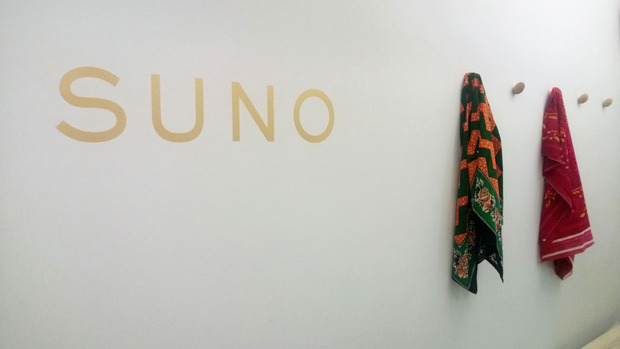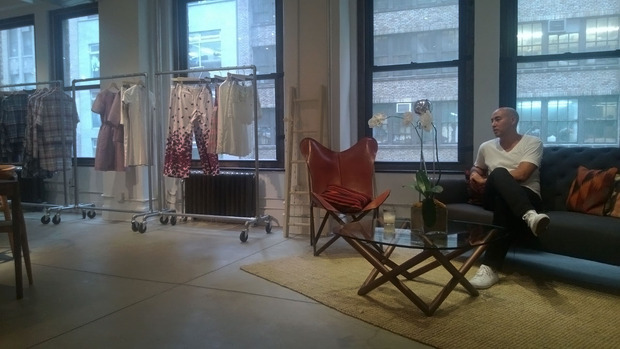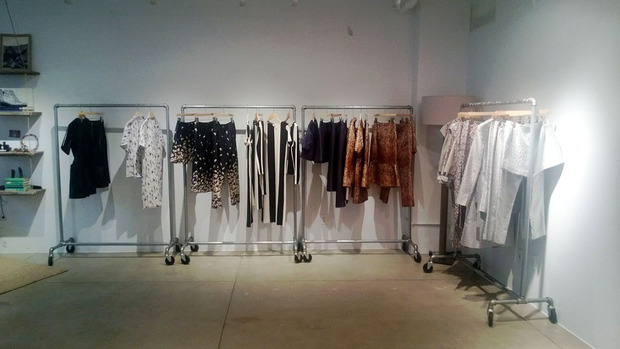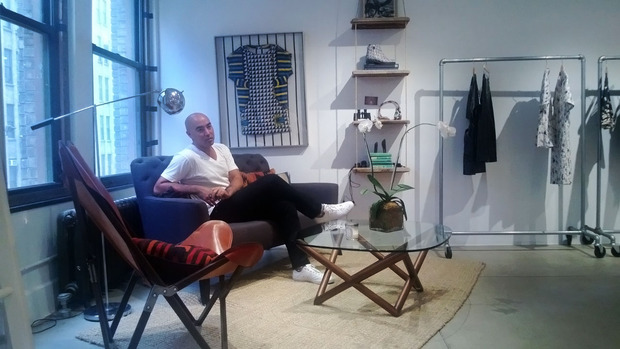Interview: Max Osterweis, In the Gloaming
Womenswear label SUNO co-founder talks about the inception and inspiration of the brand

Sponsored content:

For the final article of In the Gloaming—a CH series sponsored by Windows Phone, showcasing the ability of the PureView camera on the Nokia Lumia 928—we interviewed Max Osterweis. Chief executive, creative director and cofounder of award-winning fashion house SUNO, Osterweis started out as a collector of Kenyan textiles. A traveler with an eye for engaging design, Osterweis was drawn to printed cotton kangas during frequent visits to Kenya, a place he considers his second home. After the threat of economic tumult after a post-electoral uprising there, Osterweis launched SUNO with designer Erin Beatty. The brand’s global emergence and their local impact—being produced initially in Kenya, and now also including production centers in India, Peru and native-New York—were rapidly felt and continue at an unmatched pace.
Luxurious but accessible, each SUNO line embraces high-end tailoring, while utilizing unique textures, embroideries and patterns. There is an emphasis on fit and fabric, with tasteful layering called to action. Attention and acclaim continue to pour forth, and it’s understandable. The clothing represents many attributes of Osterweis, including his social-awareness and charm. We sat down together to discuss the brand’s inception, inspiration and process.

SUNO sprung from your personal textile collection. What was the turning point from being a collector to a creator?
As a kid I started collecting textiles whenever I traveled—probably because they were the easiest souvenirs to stuff into a backpack. I started collecting East African textiles about 19 years ago when my mother started to spend time in Kenya. Over the years, as my collection grew, I would promise friends that I would make dresses, skirts or pillowcases for them. (I had absolutely no idea how to actually make these things. I didn’t go to design school. I was a filmmaker before SUNO.) At a certain point the collection grew enough that I needed to shed some of it to make room in my closets. That, combined with a desire to do something good in Kenya—which had become a second home to me—really put the fire under me to get started making clothes.
How did you come to partner with your designer, Erin Beatty?
Erin and I were friends for a couple years before we started SUNO. Her best friend, Elisa Restrepo (who is one half of the shoe brand Dieppa Restrepo) introduced us. We hung out, went to parties and dinners together and when I had the idea to start SUNO, I asked her for help. I knew she was a designer and initially I asked her for advice, but as I started to get more and more serious about it I realized I was going to need much more than just advice. She showed me her portfolio and I was happily surprised with her talent and range. I asked her if she wanted to work with me and she offered me a week, and then as we got going she gave me another month, and then three months, and then a year and now it’s been five years this month!
How do you land the fabrics and textiles you currently utilize? How has that process changed?
After that first season when we used vintage textiles, we immediately realized that in order to create a sustainable business we would have to use new fabrics that we could choose and control. We now work with fabric mills (primarily in Italy and Korea) as well as artisans and factories in India and Peru. Now we design the prints (often based on vintage prints) in-house and then have the mills apply or knit the prints onto or into the fabrics. The only part of the process that is similar to the first season is the selection of the vintage prints.

Who do you think the market is for SUNO? Did that align with your initial vision of the brand?
Initially, we really were making things with our friends (globally minded New York girls, all roughly our age) in mind, however, even with that first collection, we were embraced by a much broader audience than we had anticipated. Just with that first collection we had everyone from Michelle Obama to Sofia Coppola to Rihanna wearing it. When we went on the road to do trunk shows we met customers of all ages that appreciated it and wore it in ways we did not expect. To a certain degree it can be challenging to think that your audience is broader than you might have expected, but it’s a good problem to have. With the exception of a few more commercial pieces that our sales director insists we add each season, we luckily haven’t really had to change our vision for who we were designing for.
How is your personal style reflected in SUNO?
My personal style is rather different than that which excites me. I wear the same thing everyday. However, I do like to surround myself with beautiful things from all over the world and from different eras. As mentioned earlier, I collect textiles from all over the world. I also collect art, furniture, and designed objects from all over. It sounds like it might be a bit messy, but I do my best to keep it clean and curated.

Your attire is already available at more than 60 retailers globally. What are your hopes for the future of the brand?
We would love to expand to other product categories that could include accessories, home goods, and menswear. We would also love to open our own stores. Obviously that won’t happen overnight, but we’re working towards these goals.
Thank you to Windows Phone for sponsoring In the Gloaming on Cool Hunting. All images for this series, unless otherwise noted, have been shot using the PureView camera on Nokia Lumia 928 and are presented without any retouching.












